Problem: A truck manufacturer was looking for a rivet feeder that would feed an automated assembly cell. They needed 30 parts per minute delivered to their fastener robots. The customer had limited space for the feeder system. Everything had to fit into a small space.
Solution: To resolve the space issue, Fortville Feeders’ engineers designed a vibratory system without a feeder bowl. Typically, vibratory bowls are used to stage bulk parts, properly orient them, send them down a track and collect misoriented parts for recirculation. This feeder called for non-traditional engineering solutions. In this case, those functions were all performed on the inline tracks.
Bulk parts were loaded into a vibratory hopper which dropped them into a five-line manifold at the top of the inline tracks. As the parts moved down the tracks, they were oriented with heads up. Misoriented parts were dropped from the line to a return pan below. These parts were then returned to the hopper via a cleated elevator.
The parts were finally moved to a dead nest at the end of the line. They were then blown with compressed air to the assembly station down five plastic tubes.
Eliminating the vibratory bowl allowed the customer to fit this feeder system into their limited space. The key to its success was the efficiency of its inline tracking system to perform the same services of a feeder bowl in a short space.
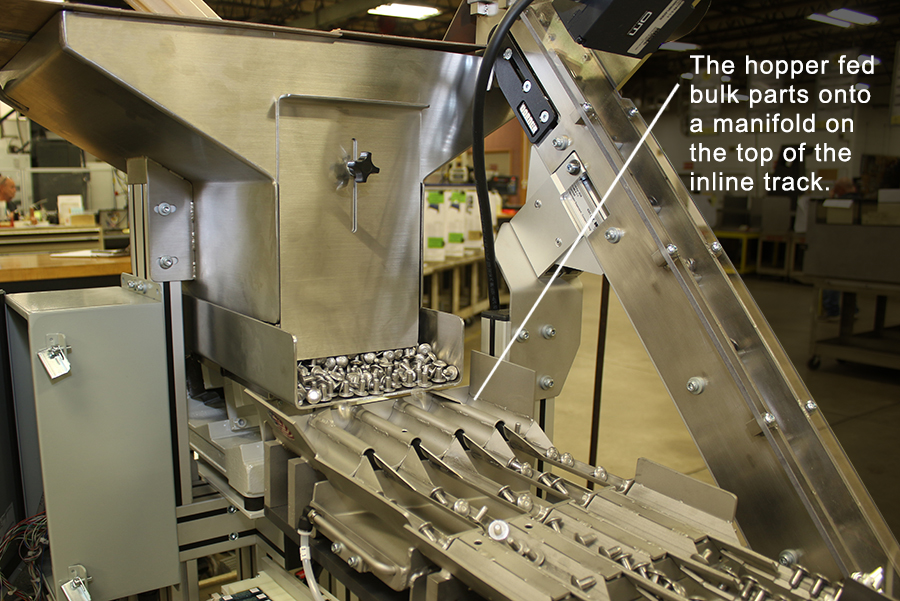
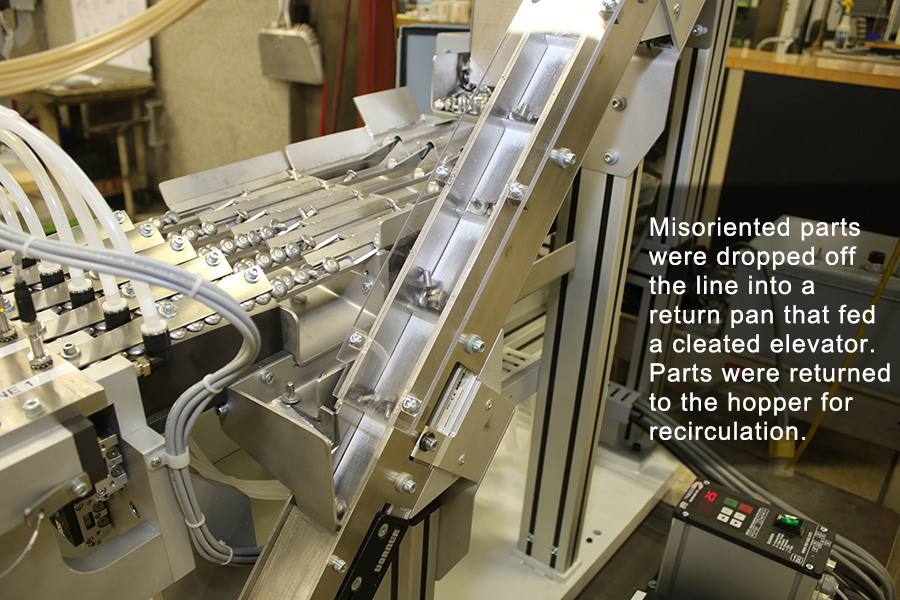
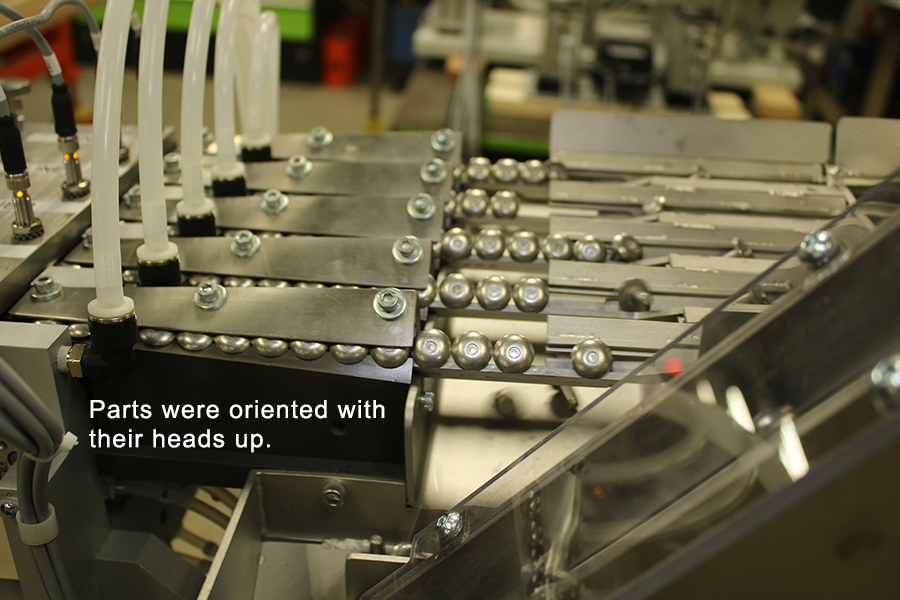
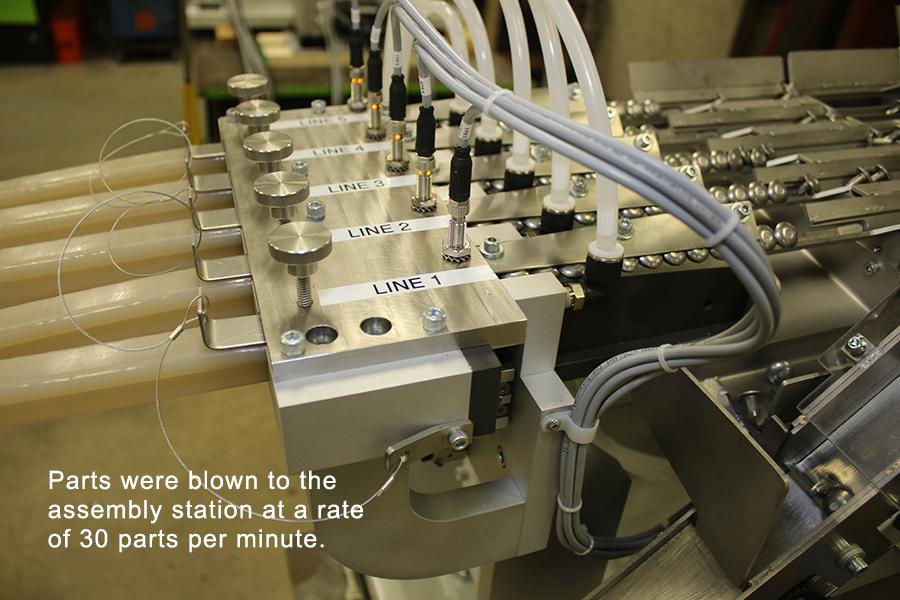
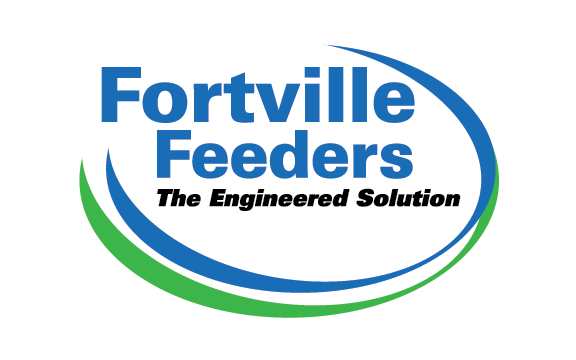
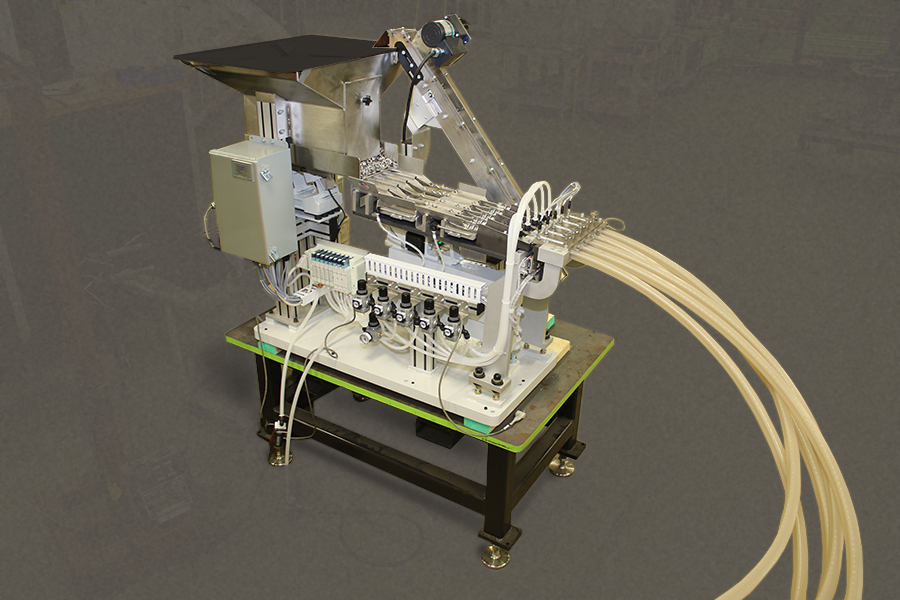
Recent Comments